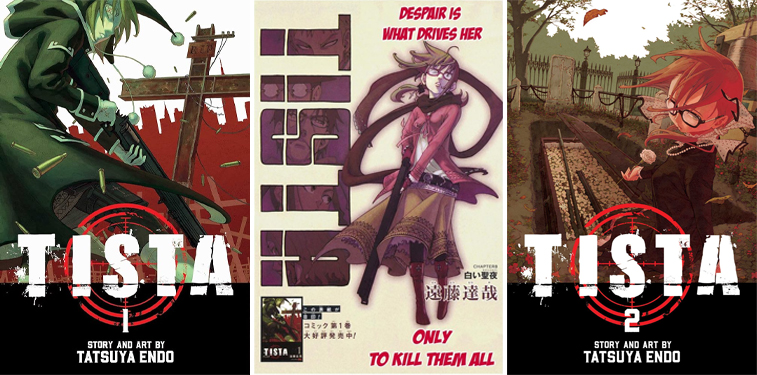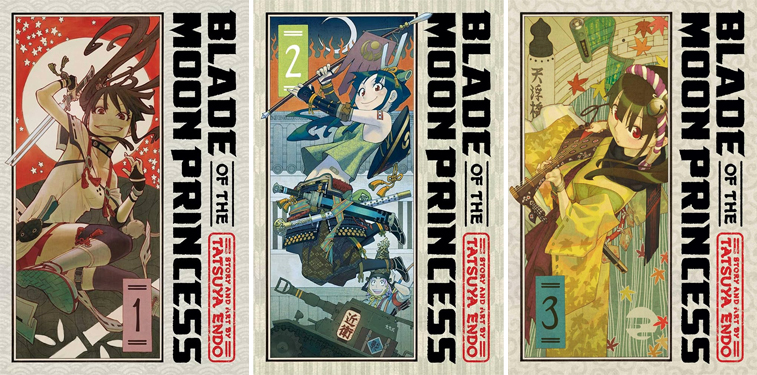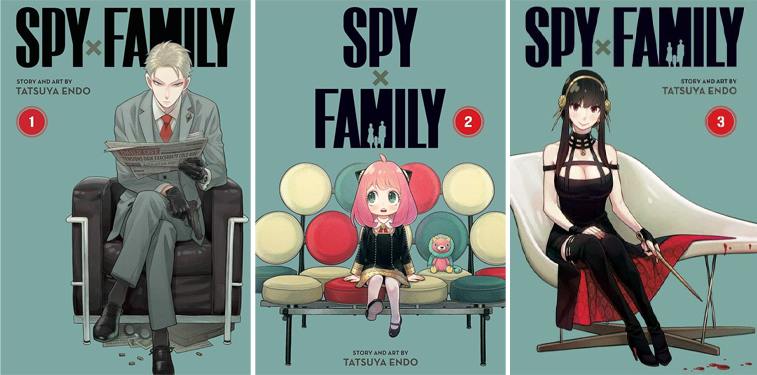DEFINITIONS
 Mangaka: Japanese term for a cartoonist or comic artist. The term often comes with the implication that the artist is also the writer of the story, in part or in whole.
Mangaka: Japanese term for a cartoonist or comic artist. The term often comes with the implication that the artist is also the writer of the story, in part or in whole.
Sensei: Japanese honorific. Used most commonly to refer to teachers, it is also used when referring to people who are experts in their field, such as doctors, lawyers, or renowned authors; and, indeed, mangaka. Can be used as a stand-alone title or a suffix to the surname.
INTELLIGENCE BRIEFING . . .
Tetsuya Endo’s work stands out amongst his contemporaries published under the Shonen Jump brand. While Weekly Shonen Jump and the Jump brand as a whole are no strangers to comedy, classics like Dr. Slump have largely seen modest success outside of Japan–if they manage to get published outside of Japan at all. For example, the vast majority of people reading this have probably never heard of KochiKame: Tokyo Beat Cops, even though it ran continuously in Weekly Shonen Jump for 40 years. And while One Piece certainly leans harder on comedy than most anime that gain traction in the US, it has a lot more in common with previous successes like Dragon Ball Z and Naruto.
In this regard, Endo-sensei’s Spy x Family stands out as a Jump comedy that is wildly popular in the US. Although it has yet to be seen if Spy x Family will reach the level of mainstream success enjoyed by Jump alumni such as the aforementioned Naruto, casual anime fans and connoisseurs of Japanese media alike are enjoying the misadventures of the Forger Family.
With Spy x Family enjoying both financial and critical success, and with the animated tie-in film arriving in North American theaters this year, let’s take a look at some of Endo-sensei’s previous works to see how we got here. We’ll also take a slightly deeper dive into Spy x Family itself to see why it’s infiltrated its way into the hearts and minds of anime and manga fans.
MISSION START . . .
Tista (2007-2008)

translated by Misa, touch-up art and lettering by Chi Wang
Tetsuya Endo-sensei’s first serialized work was published in the monthly anthology Jump Square from 2007 to 2008. Tista is a fascinating title in Endo-sensei’s timeline. Virtually devoid of the comedy and heartwarming comfort of Spy x Family, you can still clearly see the dots connecting the two titles. The titular Tista is a young woman attending school with the dream of becoming a teacher. She meets fellow classmate Arty, who discovers her secret: Tista is an assassin working for a militant church. Seeing how miserable Tista is, Arty tries to help her leave behind the life of an assassin.
At a glance, Tista seems like a dry run for the backstory for Yor Forger, the mother in Spy x Family and an expert assassin. However, Yor and Tista’s occupations are where their similarities end. For one, the organization Yor works for doesn’t appear to be religiously motivated, but more philosophical in nature. More striking is the stark contrast in how the violence Yor inflicts differs from Trista’s work.
While the violence Yor inflicts plays out as dark comedy or heart-pounding action, Tista’s story has more in common with the infamous cult-classic anime Kite; a dark, intense story about the corruption of the innocent and the impossible dream of escaping a life of violence. Some of that violence is still stylized and flashy, to be sure, but there’s a distinct sense of emptiness when Tista takes a life.
Tista doesn’t plunge the depths of depravity to the same extent as Kite, nor is it anywhere near as explicit as the uncut version of that film. Even so, Tista is a difficult read if you’re waiting for the sun to finally part the clouds. There is no such reprieve to be found in this story. I would sooner recommend Tista to a Quintin Tarantino fan than a Spy x Family one. However, if you’re interested in ultra-violent action-thrillers that rip your heart out and stomp on it, this two-volume series is worth checking out. A good read for tragedy enjoyers.
Blade of the Moon Princess (2010-2012)

translated by Casey Loe
Endo-sensei’s second serialized title in Jump Square ran from 2010 to 2012. Blade of the Moon Princess is loosely based on a Japanese fairy tale, The Tale of the Bamboo Cutter. However, there are some significant differences. Kaguya-hime’s banishment from the moon in the original tale is only briefly mentioned, while in Moon Princess, the banishment is the starting point for the series. The original Kaguya-hime is the epitome of a mature, demure and intelligent Japanese maiden; however, Kaguya Takenouchi from the manga is crass and violent. Also, the folktale centers on Kaguya’s relationship with her adoptive father and the Emperor of Japan, but Moon Princess centers on Kaguya’s relationship with her mother.
The opening chapter establishes Kaguya’s complicated relationship with her mother, the Empress of the Moon. On its own, the first chapter holds up as a short story about a mother and daughter burdened by duty, illness and bloody court intrigue. Kaguya is a compelling protagonist—a troublemaker who desperately wants her mother’s love and attention—while the Empress is tough as nails but has a warm heart. The first chapter left me desperately wanting to see these two women reunite and learn to understand each other.
In terms of tone, I would place Moon Princess between Tista and Spy x Family. Moon Princess has more levity than Tista, but it is still a far cry from the straight-up comedy of Spy x Family. This is Endo-sensei’s take on the battle manga genre, standing alongside the likes of Bleach, Naruto and My Hero Academia. While the novelty of having a female lead for a title of this genre would’ve been enough to catch my attention, the characters, setting and artwork are what really sucked me in.
Originally serialized from 2010 to 2012, Endo-sensei’s art is more refined than it was in Tista, and is already approaching Spy x Family’s level of excellence. The setting of the moon has modern and futuristic technology, with a Heian period aesthetic: holographic tablets in the shape of scrolls, gas masks shaped like tengu masks and the Empress wears a stylized version of traditional jūnihitoe while wielding what appears to be a vibroblade. Just as fascinating, is Earth’s relationship with the Kingdom of the Moon, as it appears to be something like a tributary to the Moon. If you prefer the finer details of a sci-fi setting to be implied in dialogue rather than outright exposited, I think you’ll enjoy this title.
And I’ve already spoken at length about how intrigued I am by the main character and her mother, so I’ll conclude this section by simply giving my thumbs-up recommendation for you to check this series out.
Spy x Family (2019–Present)

Various Translators
The modern masterpiece and the reason we’re here. Spy x Family is the hilarious and thrilling adventures of the Forger Family, which began serialization on the digital platforms Shonen Jump+ and Manga Plus in 2019. Agent Twilight, the greatest spy in the fictional country of Westalis, is charged with Operation Strix: to create a family in order to get close to Donovan Desmond, a reclusive warhawk in the equally fictitious country of Ostania.
Twilight, under the name of Loid Forger, unknowingly adopts a telepathic daughter and equally unknowingly marries an assassin. Daughter Anya tries to navigate life at the illustrious Eden Academy, while wife Yor tries to be the perfect wife and mother—that is when she isn’t eliminating all threats to world peace with extreme prejudice.
Part family sitcom, part war drama, part school comedy, part spy thriller, part domestic romance, part slapstick and part martial arts bloodbath, Spy x Family is such a hodgepodge of genres it’s amazing the story manages to function at all. Yet Endo-sensei masterfully keeps all these plates spinning, telling a story that is funny, thrilling, comforting, disturbing, heartwarming, heartbreaking and just a little bit romantic. It unflinchingly gazes upon the horrors of war while earnestly believing that peace is possible. There are shades of Endo-sensei’s earlier, darker works when the series dips into the character’s backstories, especially those of Agent Twilight and his handler, Sylvia Sherwood. Ultimately, however, Spy x Family is a comforting story where peace wins out in the face of seemingly inevitable war; a story that is hopeful, but not ignorant. Please give it a look if you haven’t already.
DEBRIEFING…
We’re going to take a bit of a sharp turn at the end here.
Trauma around suicide and suicidal ideation is sadly common, so I fear it would be negligent for me not to disclose that all of the above works mention or depict suicide to varying degrees. Please be mindful that content and trigger warnings are not an admonishment of the works in question, nor are they meant to discourage readers, viewers and listeners from engaging with these works. Content and trigger warnings are meant to provide us all with the ability to make informed choices. Empowering our patrons to make informed choices is what librarianship is all about.
Endo-sensei’s works are evocative and insightful, and I hope everyone reading this post gives the above titles a chance. Just don’t feel ashamed if you have to take it slow, or if now is not the opportune time. The books will be here when you’re ready.
